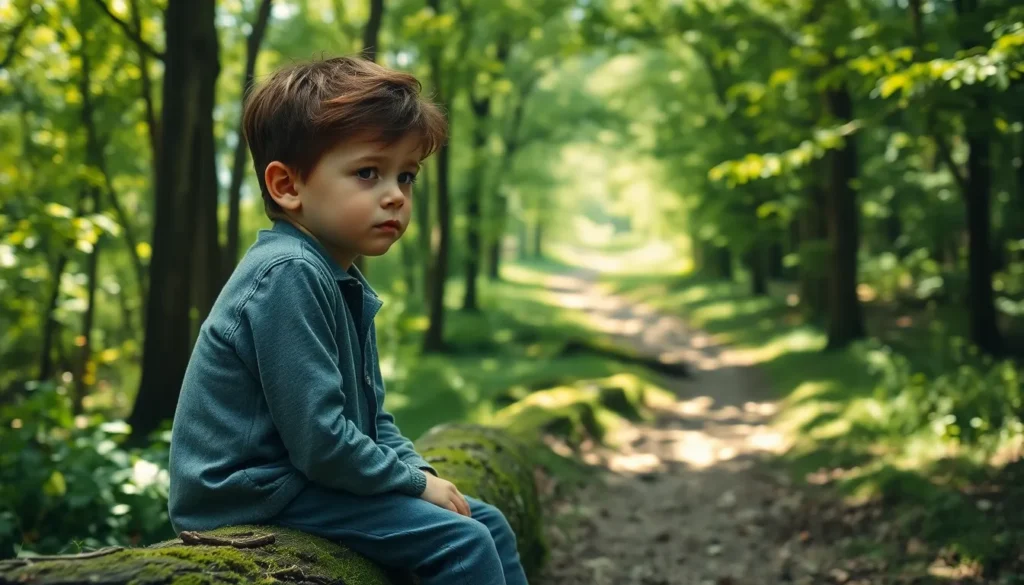In a world where every second counts, the gripping tale of “Three Days and a Life” reminds us just how much can change in a blink. It’s not just a story; it’s a rollercoaster of emotions that takes readers on a wild ride through the complexities of life, choices, and the consequences that follow.
Table of Contents
ToggleOverview of “Three Days and a Life”
“Three Days and a Life” presents a gripping narrative that highlights the fragility of human existence. It follows the life of a young boy who, after a fateful incident, grapples with guilt and fear. Readers witness his struggle as the consequences of his actions unfold over the years.
The story intricately weaves themes of love, loss, and redemption. Each character’s journey adds depth to the tale, illustrating how choices shape lives. A mother’s anguish and a father’s silent strength contribute to the emotional weight carried throughout the plot.
Significant events occur within a compressed timeframe, emphasizing how quickly everything can change. The boy’s attempts to escape his past reveal not only his inner turmoil but also the societal pressures surrounding him. Life’s unpredictability stands central to the overarching message, encouraging reflection on personal decisions.
Narrative elements blend seamlessly, creating an immersive experience for the reader. The pacing captures urgency—the story unfolds with an intensity that mirrors the boy’s escalating fears. Visual descriptions evoke vivid imagery, transporting the audience into the protagonist’s conflicted psyche.
Ultimately, “Three Days and a Life” resonates with timeless truths about the human condition. Its exploration of moral dilemmas invites contemplation on right and wrong. The tale is not just about an individual’s story; it represents broader themes of accountability and the ripple effects of actions. As characters navigate their complex relationships, the story underscores the importance of resilience and hope.
Character Analysis

The characters in “Three Days and a Life” reflect the complex nature of human emotions and relationships. Each one plays a crucial role in driving the narrative forward.
Main Protagonist
The young boy, Antoine, serves as the heart of the story. Guilt and fear shape his actions following an accidental event that alters his life. Throughout the narrative, Antoine struggles with the burden of his choices, often reflecting on his innocence lost. His character embodies the fragility of childhood and the weight of adult responsibilities. As the plot unfolds, Antoine’s evolving emotional state reveals his vulnerability, leading to moments of deep introspection.
Supporting Characters
Supporting characters enrich Antoine’s journey, each contributing unique perspectives. His mother, overwhelmed by grief, represents a contrasting emotional landscape, illustrating parental love intertwined with sorrow. The boy’s friend, Joseph, adds layers to the narrative, highlighting themes of loyalty and betrayal. Local townspeople also influence the evolving dynamics, creating an environment that amplifies Antoine’s internal chaos. These characters’ interactions further illuminate the repercussions of Antoine’s choices, emphasizing the intertwined fates that characterize the story.
Thematic Elements
Themes within “Three Days and a Life” highlight the profound impacts of life’s fleeting nature and the heavy burden of choices. Readers experience the emotional depth woven throughout the narrative.
Life and Death
Life and death play crucial roles in shaping the story’s direction. Antoine’s encounter with death catalyzes a catastrophic shift in his existence, plunging him into a world filled with confusion and guilt. The delicate balance between life and death underscores the fragility of human experience. As Antoine grapples with his decisions, the looming presence of mortality alters his perspective on what it means to truly live. Characters face existential dilemmas that test their resolve and moral compass, reinforcing the unpredictable nature of life’s journey. These elements intertwine, creating a rich tapestry of emotions that resonates deeply with readers.
Guilt and Redemption
Guilt emerges as a central theme, driving Antoine’s character arc throughout the story. His internal struggle becomes palpable as he navigates the consequences of his actions. Redemption, on the other hand, serves as a glimmer of hope amid despair. Characters confront their past mistakes, with many seeking forgiveness and reconciliation. Antoine’s path reveals that redemption often requires confronting one’s own fears and uncertainties. Each character’s quest for absolution adds complexity to the narrative, illustrating the intricate dance between guilt and the desire for redemption. Such themes resonate universally, speaking to the human experience regardless of circumstances.
Narrative Style and Structure
“Three Days and a Life” employs a tight narrative style that enhances emotional engagement. The story unfolds through a linear progression, focusing on the protagonist, Antoine, as he navigates the repercussions of a critical choice. His point of view dominates, offering readers direct insight into his guilt and fear. Each chapter captures crucial moments that define his character growth, creating an intimate connection with the audience.
The structure incorporates parallel storylines, intertwining Antoine’s journey with those of supporting characters. His mother embodies grief, presenting a stark contrast to his internal struggle. Joseph, his friend, showcases loyalty and betrayal, pivotal themes that drive the narrative. These relationships deepen the storyline, making each character’s experiences significant to the overall message.
Vivid imagery enhances the immersive experience for readers. Descriptive language portrays the setting and characters’ emotions realistically. Moments of tension arise as Antoine confronts his past, emphasizing the urgency of his internal chaos. Short, impactful sentences contribute to the story’s pacing, heightening suspense during critical turning points.
Themes of life and death permeate the narrative, reinforcing the story’s gravity. Antoine’s encounter with death acts as a catalyst for transformation, plunging him into a cycle of confusion and guilt. The exploration of guilt offers a lens through which readers assess their moral dilemmas. Redemption emerges as a thread of hope amid despair, with each character’s quest contributing to the overall complexity.
Ultimately, the style and structure of “Three Days and a Life” resonate deeply with the audience. The narrative’s ability to intertwine personal experiences with broader themes encourages contemplation on the human condition. Readers are invited to reflect on the weight of choices, life’s unpredictability, and the resilience required to navigate complex relationships.
Reception and Impact
“Three Days and a Life” garnered significant attention from both critics and audiences upon its release. Reviews frequently noted its emotional depth and compelling storytelling. Critics praised the narrative’s ability to evoke strong feelings regarding guilt, fear, and the quest for redemption.
The film received a variety of accolades, emphasizing its cinematic excellence. Awards recognition included nominations for Best Director and Best Actor, reflecting the strong performances that resonated with viewers. Box office results indicated a positive reception, showcasing the film’s ability to attract diverse audiences.
Themes of childhood fragility and adult responsibilities sparked discussions among viewers, often prompting deeper reflections on personal choices. Audiences connected with Antoine’s journey, identifying with his struggles and moral dilemmas. Engaging dialogues among characters provided a relatable exploration of relationships, enhancing the film’s emotional resonance.
Cultural impact extended beyond critical circles, as discussions on social media flourished. Online forums and platforms featured debates on the film’s moral complexities and character motivations. Educational institutions incorporated the film into discussions on ethics and societal pressure, enriching classroom dialogue.
Critical assessments highlighted the effective narrative structure, revealing how tightly woven plot points cultivated suspense. The film’s pacing maintained viewer engagement throughout. Audiences frequently cited the vivid imagery and dynamic cinematography, creating a lasting impression on those who experienced it.
Overall, the lasting effects of “Three Days and a Life” resonate through ongoing conversations about its content. Many viewers continue to reflect on the fragility of life and the weight of choices. The film’s narrative continues to be a vital point of discussion in various contexts, illustrating profound themes that transcend its storyline.
“Three Days and a Life” leaves a lasting impression on its audience through its exploration of guilt and redemption. Antoine’s journey resonates deeply as it captures the essence of human fragility and the weight of choices made in fleeting moments. The film’s emotional depth and rich character development invite viewers to reflect on their own lives and the complexities of moral dilemmas.
The narrative’s tight structure and immersive storytelling create a powerful experience that lingers long after the credits roll. As discussions around its themes continue to thrive, the film remains a poignant reminder of life’s unpredictability and the profound impact of our decisions.




